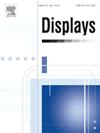通过自动分析绘画评估儿童自闭症
IF 3.7
2区 工程技术
Q1 COMPUTER SCIENCE, HARDWARE & ARCHITECTURE
引用次数: 0
摘要
自闭症谱系障碍(ASD)是一种遗传性神经发育障碍,影响着全世界的个人、家庭和社会。ASD 的筛查依赖于专业的医疗资源,目前基于机器学习的筛查方法依赖于昂贵的专业设备和算法。因此,我们亟需开发方便易用的 ASD 评估方法。在本研究中,我们致力于寻找这样一种基于儿童绘画的 ASD 筛查和康复评估解决方案。我们从 ASD 绘画数据库中选取了 375 幅 ASD 儿童绘画作品和 160 幅典型发育儿童绘画作品,设计了一系列基于 ASD 儿童典型特征的图像信号处理算法来提取图像特征。通过统计方法对提取特征的有效性进行评估,然后使用支持向量机(SVM)和 XGBoost(eXtreme Gradient Boosting)对其进行分类。在 5 倍交叉验证中,SVM 的召回率为 94.93%,精确率为 86.40%,准确率为 85.98%,AUC 为 90.90%,而 XGBoost 的召回率为 96.27%,精确率为 93.78%,准确率为 92.90%,AUC 为 98.00%。即使在对一组新收集的绘画作品进行额外验证时,这一功效仍保持在较高水平。不仅性能超过了参与验证的人类专家,而且高召回率、可负担性、可管理性和易实施性都显示了其在广泛筛查和康复评估方面的潜力。所有分析代码均在 GitHub 上公开:dishangti/ASD-Painting-Pub。本文章由计算机程序翻译,如有差异,请以英文原文为准。
Evaluating ASD in children through automatic analysis of paintings
Autism spectrum disorder (ASD) is a hereditary neurodevelopmental disorder affecting individuals, families, and societies worldwide. Screening for ASD relies on specialized medical resources, and current machine learning-based screening methods depend on expensive professional devices and algorithms. Therefore, there is a critical need to develop accessible and easily implementable methods for ASD assessment. In this study, we are committed to finding such an ASD screening and rehabilitation assessment solution based on children’s paintings. From an ASD painting database, 375 paintings from children with ASD and 160 paintings from typically developing children were selected, and a series of image signal processing algorithms based on typical characteristics of children with ASD were designed to extract features from images. The effectiveness of extracted features was evaluated through statistical methods, and they were then classified using a support vector machine (SVM) and XGBoost (eXtreme Gradient Boosting). In 5-fold cross-validation, the SVM achieved a recall of 94.93%, a precision of 86.40%, an accuracy of 85.98%, and an AUC of 90.90%, while the XGBoost achieved a recall of 96.27%, a precision of 93.78%, an accuracy of 92.90%, and an AUC of 98.00%. This efficacy persists at a high level even during additional validation on a set of newly collected paintings. Not only did the performance surpass that of participated human experts, but the high recall rate, as well as its affordability, manageability, and ease of implementation, indicates potentiality in wide screening and rehabilitation assessment. All analysis code is public at GitHub: dishangti/ASD-Painting-Pub.
求助全文
通过发布文献求助,成功后即可免费获取论文全文。
去求助
来源期刊

Displays
工程技术-工程:电子与电气
CiteScore
4.60
自引率
25.60%
发文量
138
审稿时长
92 days
期刊介绍:
Displays is the international journal covering the research and development of display technology, its effective presentation and perception of information, and applications and systems including display-human interface.
Technical papers on practical developments in Displays technology provide an effective channel to promote greater understanding and cross-fertilization across the diverse disciplines of the Displays community. Original research papers solving ergonomics issues at the display-human interface advance effective presentation of information. Tutorial papers covering fundamentals intended for display technologies and human factor engineers new to the field will also occasionally featured.
 求助内容:
求助内容: 应助结果提醒方式:
应助结果提醒方式:


